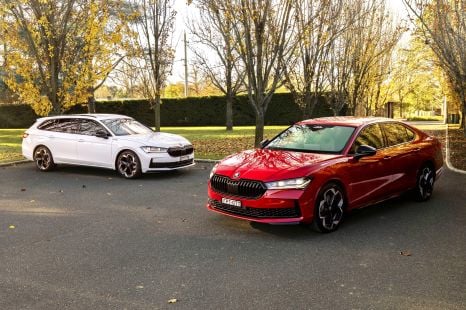

Max Davies
2025 Skoda Superb Sportline review
2 Months Ago
The new BMW 1 Series is here, and even the cheapest version is a properly compelling buy for fans of premium European hatches.
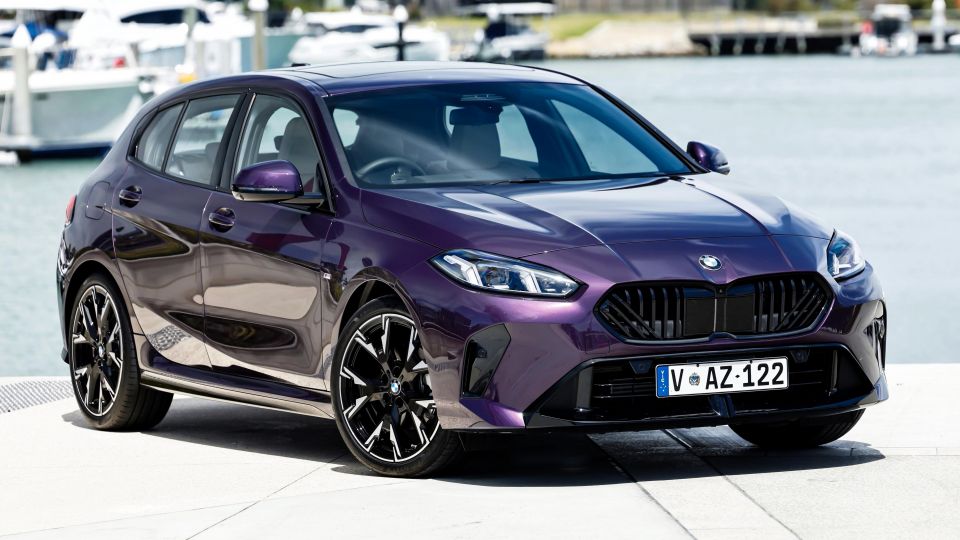
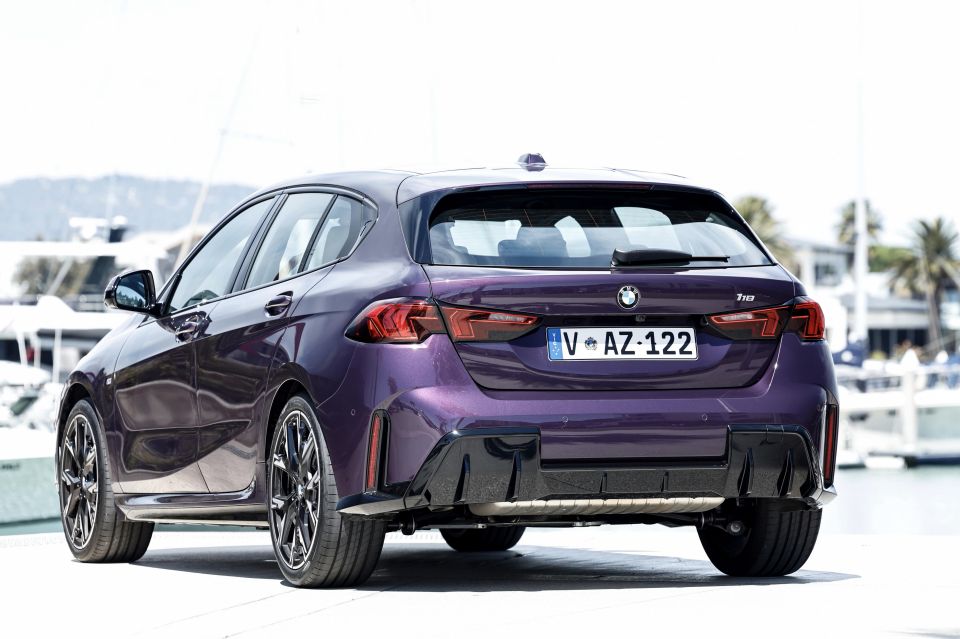

Quickly see how this car stacks up against its competition. Select any benchmark to see more details.
Where expert car reviews meet expert car buying – CarExpert gives you trusted advice, personalised service and real savings on your next new car.
The fourth-generation BMW 1 Series has arrived Down Under, and unsurprisingly there’s a lot of interest surrounding the all-new replacement for the German brand’s smallest model.

It brings with it updated aesthetics, as well as a decked-out suite of standard tech and equipment. All of that brings a compelling case for value alone, especially when you consider price increases have been kept to a minimum – at least at the bottom of the range.
The cheaper European hatch market may not be as well populated as others, but BMW is still going head-to-head with its two German arch-rivals in the same way it always has.
Of course, Mercedes-Benz has its A-Class range, which incorporates a wide range of both hatches and sedans, as well as a handful of different engines offering various levels of performance, starting with almost identical pricing at the bottom of the range.
Then there’s the Audi A3, which again has two body types and a load of different performance levels. The difference is its entry-level hatch is nearly $6000 cheaper than the equivalent BMW.
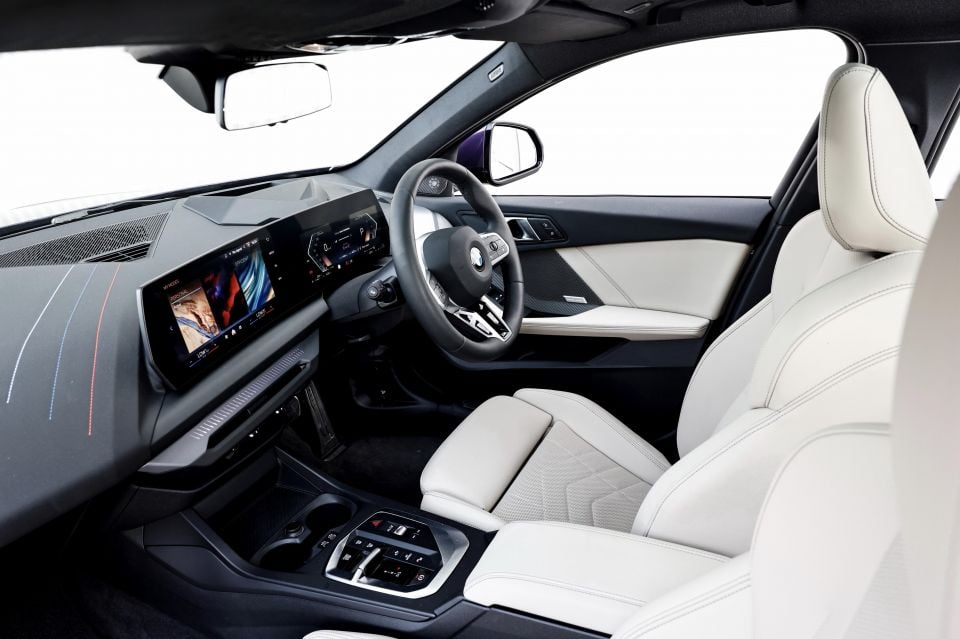
In contrast, there are only two 1 Series variants coming to Australia and both are hatchbacks (the new BMW 2 Series Gran Coupe sedan arrives here early next year). You still get two different drivetrains, and as a result the two cars are surprisingly different. Nevertheless, BMW is continuing to stake its claim in a segment that it arguably helped to create 20 years ago.
We published our first review from the international launch a few months ago, and now we’ve had our first drive of the new 1er at BMW Australia’s local launch, where we were able to sample both variants on roads in and around the Melbourne suburb of Dromana, which provided a solid mix of road types and conditions.
Because the two trim levels are quite different and we had ample time in both, this review will focus on the entry-level 118, while a second review will dive into the M135 xDrive hot hatch.
The new 1 Series range enters a competitive market not just on the European continent, so does the base 118 have what it takes to cement itself as a sales favourite?
The entry-level 118 is priced at $56,500 before on-road costs, marking a $1700 increase over the variant it replaces, but it’s also a cool $26,000 cheaper than its hotter sibling.
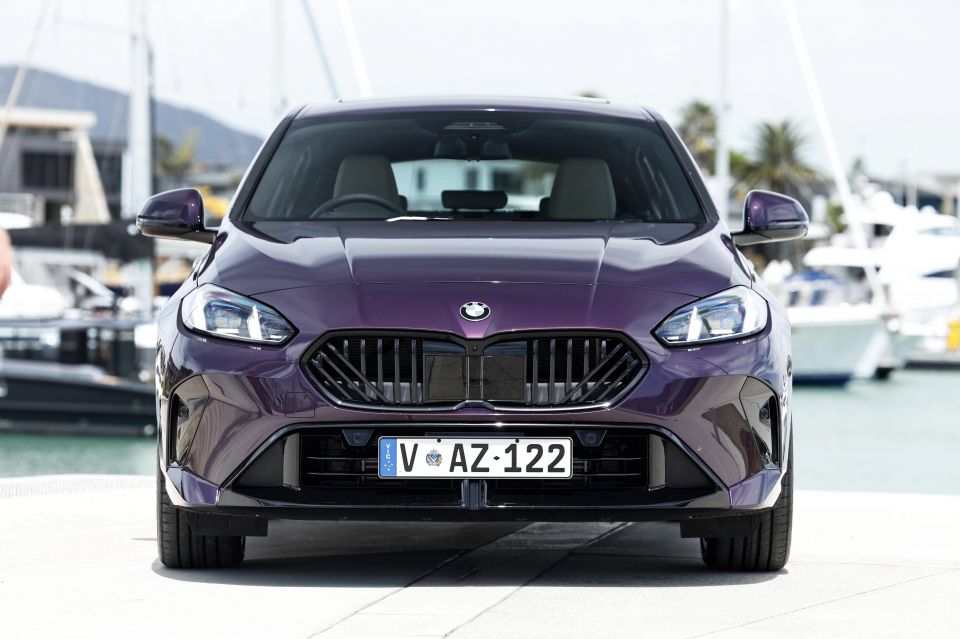
For comparison, the base A-Class hatch will set you back $56,900 before on-road costs, while the range-opening A3 hatch costs $50,600 plus on-roads.
The 118 is also closely matched against the Volkswagen Golf on price, at least in hotter GTI guise priced at $56,090 before on-roads.
| Model | Price excluding on-road costs |
|---|---|
| 2025 BMW 118 | $56,500 (+$1700) |
| 2025 BMW M135 xDrive | $82,500 (+$5900) |
To see how the BMW 1 Series stacks up against its rivals, use our comparison tool
Buy your new car without the stress. It's fast, simple and completely free.

Great service from Travis and team, second time I have used this business would not hesitate to recommend them to anyone
Craig C.
Purchased a Ford Ranger in Sunshine Coast, QLD
CarExpert helped Craig save $7,224 on his Ford Ranger, now let us save you on your next new car.
Get your BEST priceYou won’t find any relief from its screen-heavy alternatives, but the setup in the 118 isn’t all doom and gloom.
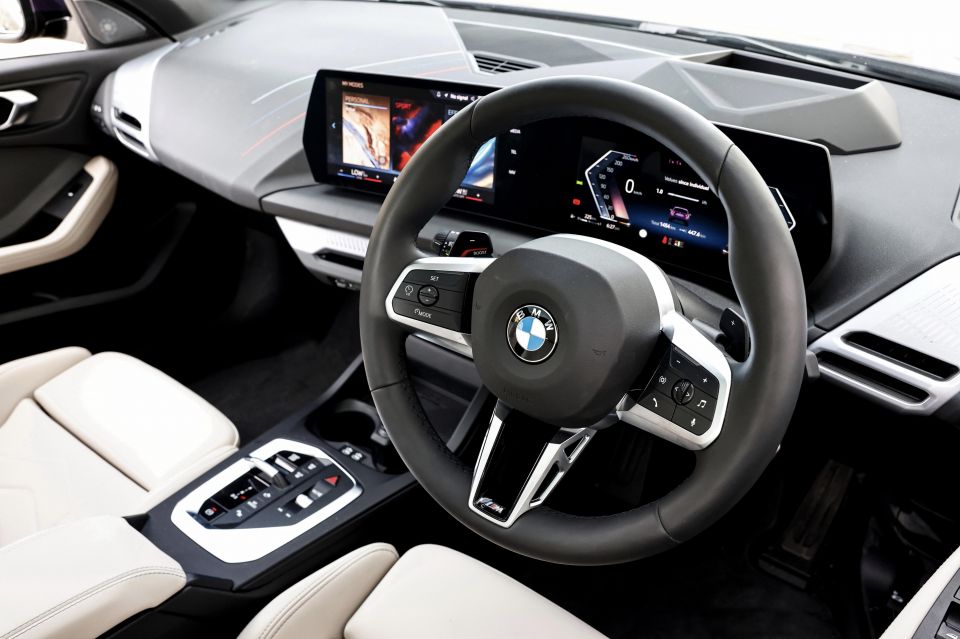
Obviously, the headline interior feature is a pair of huge screens bolted to the dashboard in a single broad panel. It’s oriented towards the driver for both practical and aesthetic reasons, and you’d be correct to assume the vast majority of the car’s functions are found here.
Starting with the 10.7-inch infotainment screen to the left, which contains an array of menus to trawl through. This includes almost every drive mode, interior appearance presets, and – unfortunately – the climate control system.
To its credit, BMW has taken an always-on approach to this system, which means the screen will display its climate control interface at the very bottom regardless of what menu is selected above.
That doesn’t mean we wouldn’t prefer some physical buttons for climate control though. As it stands, it feels a little finicky – and while you might get used to its location over time, it still requires some extra attention that could be better focussed on the road ahead.
As a final note on the climate control setup, the means by which to adjust the direction of the vents is a bit odd. Instead of grabbing a tab attached directly to the airflow slats, BMW has fitted a similar isolated toggle and dial as seen in the 5 Series.
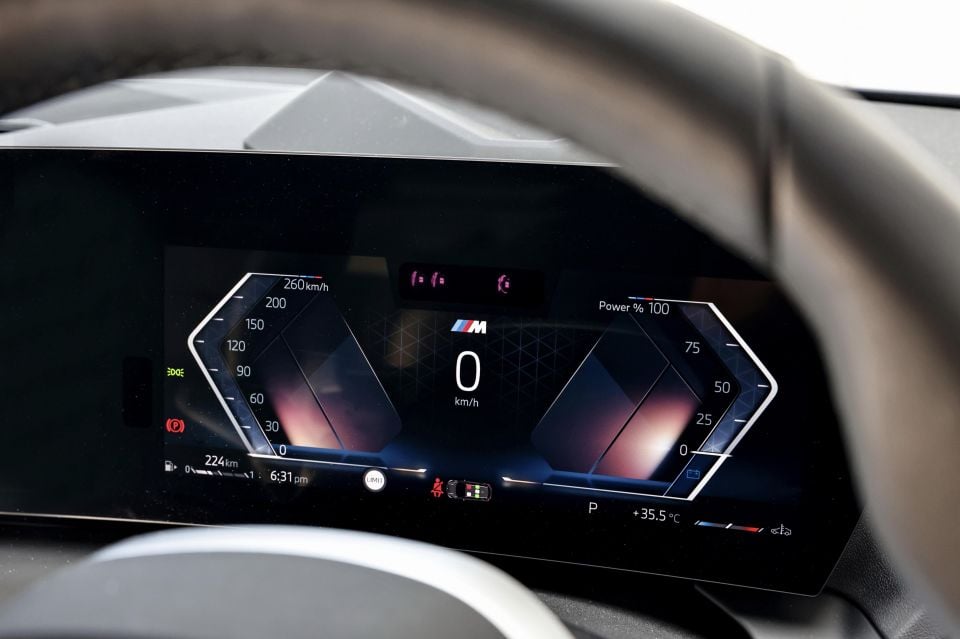
Understandably, it’s a product of the small air vents being tucked away into the crevasse of the dashboard, but it feels needlessly fiddly.
The only other real physical controls in here beyond the steering wheel are situated around the gear selector. This central panel has only a handful of buttons, namely for functions like window demisters and drive modes.
Invariably, it’s linked directly to the infotainment screen above, with the buttons redirecting your eyes to one of those many menus. The inclusion of physical audio-related controls here is at least a positive, making it easier to skip songs and adjust volume for passenger DJs in particular.
The gear selector is an interesting device. That tab flicks either down or up to select Drive/Sport or Reverse respectively, and pressing the parking brake button appears to be the only way to put the transmission in Park.
What may be difficult to find at first is the button to start the engine. It’s discreetly integrated into the gloss-black panel that surrounds the gear selector itself, which means it doesn’t stand out as much as we’re used to – some time with the car will certainly write that to memory though.
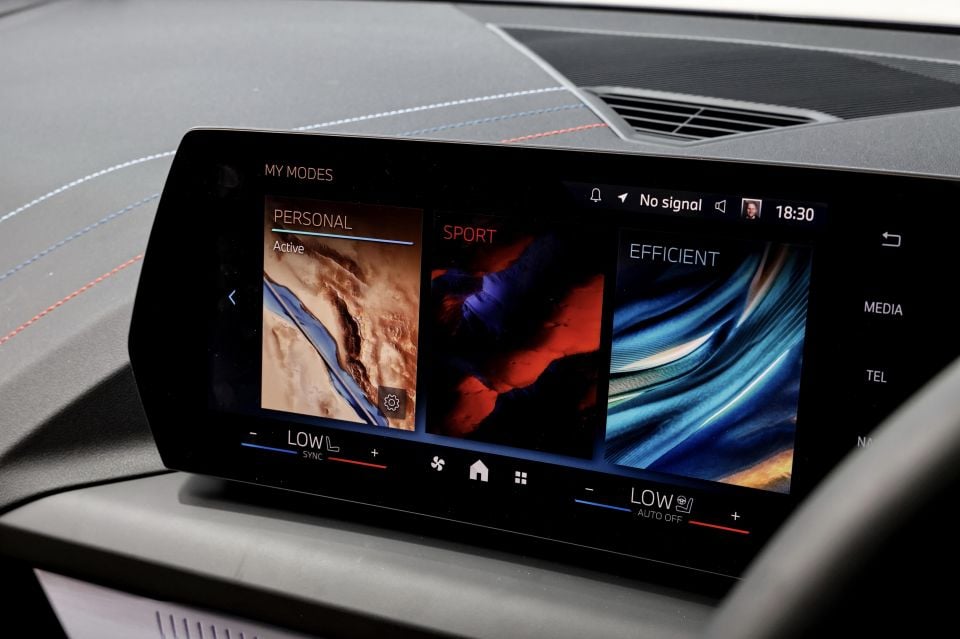
Equally, some of the buttons here may seem fairly ambiguous, so it’s worth poking around to see what they do and what menus appear.
Also found here are two cupholders, as well as two USB-C ports and a 12V outlet. There’s also a phone-sized cubby, which doubles as a wireless charging pad even in this ‘poverty pack’ 118.
The steering wheel houses the remainder of the cabin’s buttons. They’re simple in appearance and clearly legible, while anything that may seem confusing will likely be explained by the digital instrument cluster ahead.
The typically small and thick-rimmed BMW steering wheel itself is fairly simple, with no major sculpting or cut-outs beyond the thumb bulges at 10 and 2 o’clock. Standard on this car is BMW’s M Sport package, which includes a variety of sports-themed premium enhancements including the leather-wrapped wheel itself.
It’s super smooth in the hands and more of the edgier M-inspired elements can be seen on its metallic central spoke, which are echoed by the geometric shapes and the blue and red stitching on the dash.
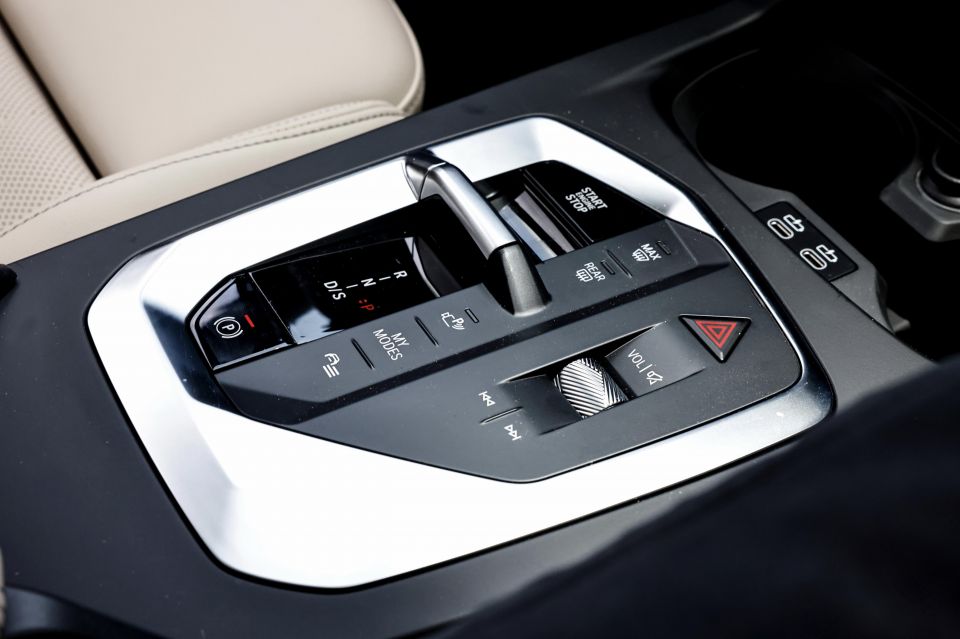
Our only complaint is that the upgraded M tiller almost feels too thick, which in our opinion fails to convey this car’s positioning as a nimble hatch since it doesn’t promote its intention of being lightweight and easy to throw around. That’s subjective of course, and some may like the way it feels.
In comparison to the M135, everything relating to the driving controls feels toned down. That’s evidenced by the paddle shifters, which are simple pieces of plastic embellished by a red ‘Boost’ stripe on the left-hand side – more on that later.
Then there are the seats, which are heated, power-adjustable, and can be upholstered in four different no-cost colourways. The three non-cloth options are what BMW calls ‘Veganza’, or vegan leather, and they can be finished in red, black, or ‘oyster’. Cloth trim (Alcantara/Veganza) is only available in black with blue stitching.
The materials are all of exceptional quality, and that’s something that’s echoed throughout the rest of the cabin, and with just how well it’s put together. Everything is feels rock-solid and looks clean, even if it does come at the expense of physical controls.
We also had no issues with the car’s tech, with the infotainment system in particular working reliably to display its native navigation function – which can use the car’s cameras to display augmented reality – and quickly switch between drive modes. As a bonus, wireless Apple CarPlay and Android Auto is included as standard.
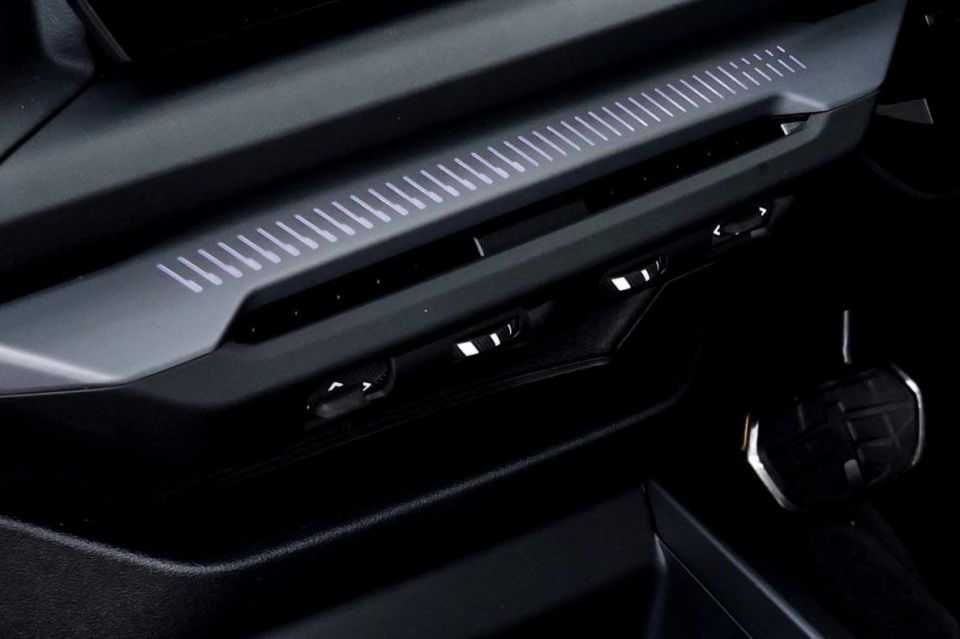
The same can be said for the 10.25-inch digital instrument cluster ahead of the driver. It’s perhaps the most configurable item in the entirety of the standard 1 Series, with a plethora of different menus and displays to scroll through in your search for one that best speaks to you.
In its most traditional configuration you’ll find a digital speedo and tacho, as well as a list of information you can sift through in between. Colours and designs will also change depending on the drive mode.
There is a selection of other designs to choose from too. Some are more minimalistic and simply display speed and perhaps what you’re listening to, while others border on race car with loads of information on hand – though again not to the extent of the M135.
Additionally, there’s a high-quality head-up display ahead of the driver, which works consistently in conjunction with the in-built navigation and instrument cluster.
Moving to the second row reveals a surprising amount of space, though expect it to become cramped if there are three large people loaded up.
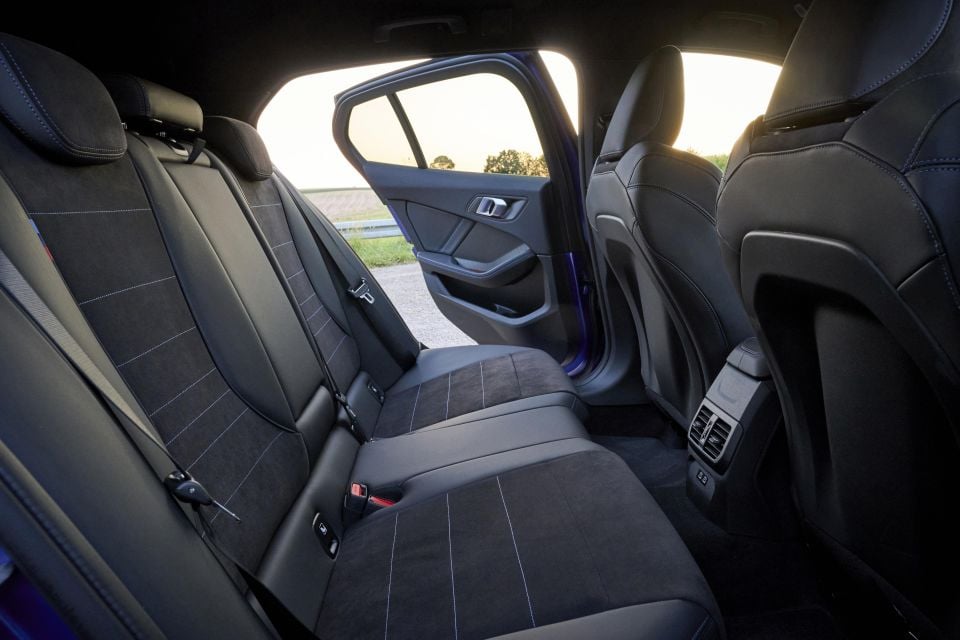
There is plenty of legroom and headroom, despite the black headliner making the car feel just a little bit more closed-in. We like black headlining in general, and in the 1 Series it does wonders to elevate the experience in the rear of the cabin especially.
Legroom is aided by cut-outs in the front seatbacks, while passengers back here can make use of two USB-C ports and a pair of rear-facing air vents – only this time without the fiddly isolated adjusters.
There’s also a fold-down centre armrest, and overall the three-seat bench is plenty comfortable to sit in. The only downside is it’s fairly flat, which means passengers in the rear may find themselves sliding around on twisty roads.
More of that surprising practicality carries through to the boot, which offers a large, flat floor and a robust cargo cover up top. For comparison, seats-up space is 10L more than in an A-Class hatch, and exactly the same as the A3 Sportback.
BMW has fitted a fair few cargo hooks here too, including four at the front, two up top, and a handful of others on the rear inner-facing wall, highlighting the sizeable loading lip between the opening and the floor, as found in many other similarly sized hatches.
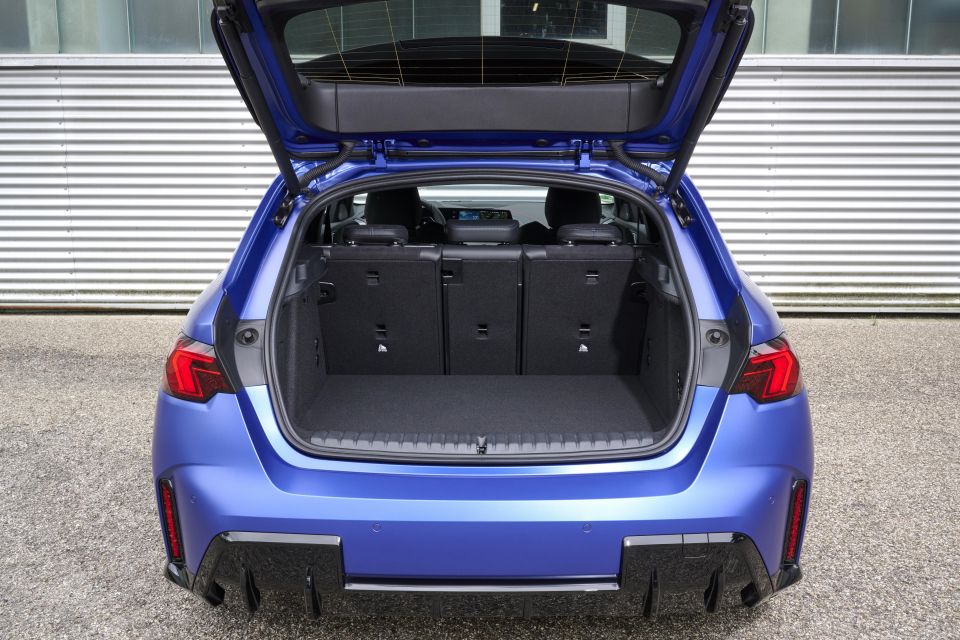
It’s also a way that BMW has managed to capitalise on cargo capacity, because the lack of a spare wheel allows the boot floor to be lower. A downside of that is, of course, that you have to make do with a tyre repair kit instead.
To top it all off, there’s a powered tailgate as standard. So everything here is as you would expect from a brand like BMW, even if we could do without the M Sport moniker and its associated cosmetic tweaks.
| Dimensions | BMW 1 Series |
|---|---|
| Length | 4361mm |
| Width | 2072mm (incl. mirrors) |
| Height | 1459mm |
| Wheelbase | 2670mm |
| Cargo capacity | 380L (rear seats up) 1200L (rear seats folded) |
To see how the BMW 1 Series stacks up against its rivals, use our comparison tool
There are two petrol engines available across the two-grade 1 Series range. The 118 is powered by a three-cylinder turbo, which delivers appropriate performance for an entry-level BMW hatch.
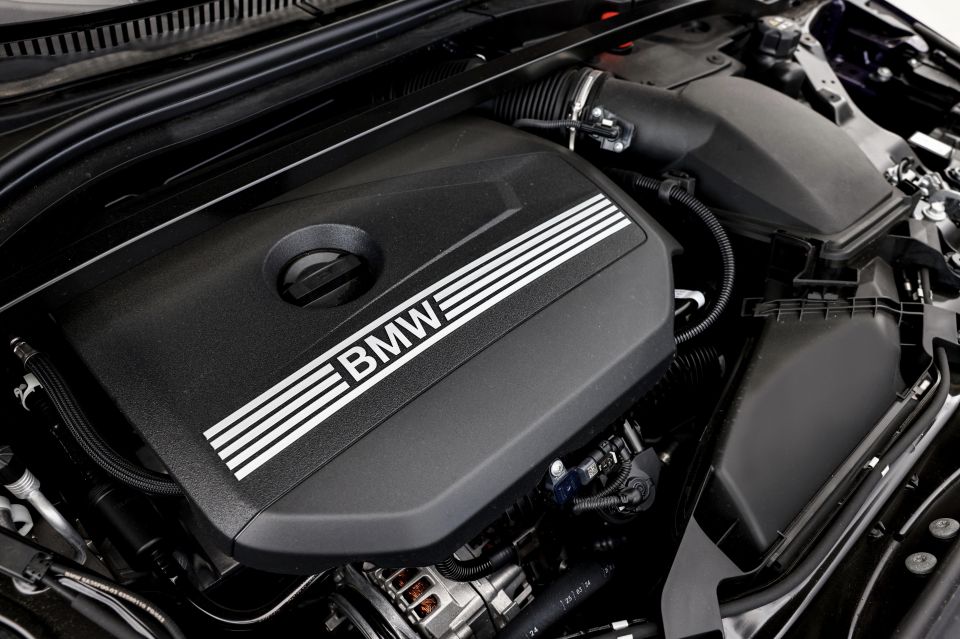
We’re unable to provide a representative real-world fuel economy figure, as we didn’t get enough time behind the wheel of any one particular vehicle to properly test how efficient it would be to live with.
| Specifications | BMW 118 |
|---|---|
| Engine | 1.5-litre turbo-petrol 3cyl |
| Power | 115kW |
| Torque | 230Nm |
| Transmission | 7-speed dual-clutch auto |
| Drive type | Front-wheel drive |
| Acceleration (0-100km/h) | 8.5 seconds |
| Kerb weight | 1390kg |
| Fuel economy (claimed) | 6.4L/100km |
| Fuel tank capacity | 49L |
| Fuel requirement | 98 octane premium unleaded |
| CO2 emissions | 145g/km |
| Braked tow capacity | 1300kg |
To see how the BMW 1 Series stacks up against its rivals, use our comparison tool
Surprisingly well – in fact, you’d be forgiven for thinking the 118 was an M135 behind the wheel, at least until you mash the throttle.
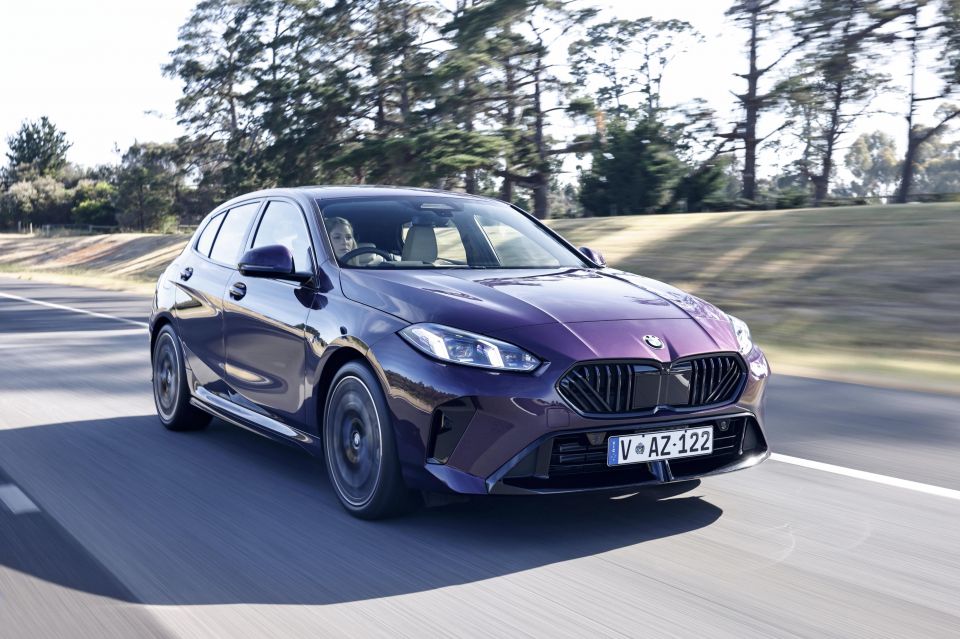
Upon getting into the 118 you’re greeted with a similar presentation to what you find in its faster brother, not least due to the M badges that form part of the M Sport package.
Before you’re even in the driver’s seat you’ll see them on the front quarter panels, then at the bottom of the steering wheel while you’re buckling in. They’re subtle but mean a lot to any BMW M fan, and backing them up is how nimble the 118 feels around town, where speeds are low and manoeuvrability is king.
You likely won’t notice the more subdued engine sound when gently pulling away from a stop, let alone that it’s a three-cylinder. Both the 118 and M135 get the same dual-clutch automatic transmission too, making them feel very similar on takeoff and light throttle loads.
Then there’s the ride. Understandably and unsurprisingly given this is a sporting premium Euro hatch, it’s firm in the 118, despite the fact it’s blessed with one of the few performance enhancements the M Sport package provides – adaptive M suspension.
That said, although you could never call it plush, it’s remarkable how well the smallest BMW (not counting the closely related Mini hatch) is able to handle bumps, making it perfectly liveable on bumpy city streets, while still transmitting the crucial information to the seat of your pants.
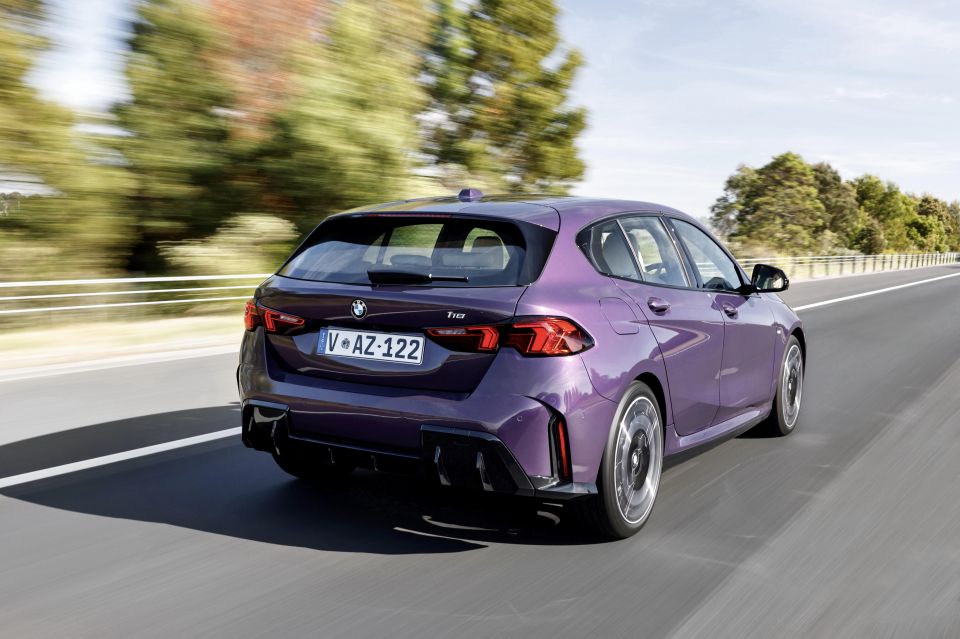
Where expert car reviews meet expert car buying – CarExpert gives you trusted advice, personalised service and real savings on your next new car.
Given the taut spring rates, the ride quality here is impressive. In true BMW fashion, there’s a perfect blend of ride comfort and body control. When you’re behind the wheel and enjoying the drive, it’s a relief to find the car actually behaves the way you’d expect it to when the pace picks up.
Of course, you likely won’t be hanging around town long, and when you inevitably take the 118 out on a country B-road with more twists and turns, you’ll be able to experience its broad range of capabilities.
The car has no issue gripping up around turns when you feel like pushing it a bit. Eventually, you’ll realise the 118 isn’t really geared towards high corner speeds as well as its big brother, but that doesn’t mean you can’t have some fun.
Sure, the front-wheel drive setup may not be as playful as rear-wheel drive 1 Series cars of the past, or as capable as the much faster M135 all-wheel drive, but there’s a high level of dynamic performance on offer here, even for the most enthusiastic drivers.
But of course, it’s not perfect. In tight turns especially, you may feel the front-end start to push. It will also break traction pretty easily if you’re quickly pulling out of a side street with a lot of steering lock applied, as is typical of a front-drive car.
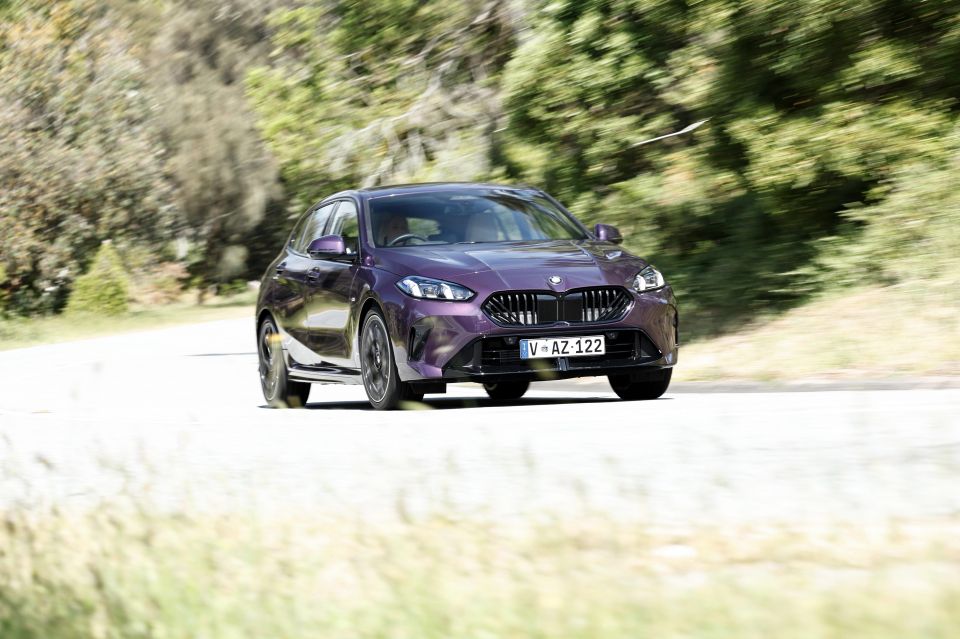
What helps reduce that tendency, as well as limit torque steer, is the fact the 118 doesn’t make massive power, making it harder to get yourself into trouble. Accurate and talkative steering, and the car’s inherent tendency to understeer rather than oversteer thanks to its drivetrain layout, usually keeps you within your own limits.
Nevertheless, while BMW has always been known for producing driver-oriented rear-drive cars, its long history of sporty chassis development has definitely rubbed off on even the entry-level 1 Series.
Once you get past the initial stiffness of the suspension, you’ll eventually find the ride is compliant and chassis setup both stable and rewarding, and that’s before you start exploring the performance produced under the bonnet.
In simple terms, the turbo triple is absolutely full of character. There’s something charming about three-cylinder engines, even if the exhaust note is noticeably muffled in comparison to the bigger and rowdier 2.0-litre four in the M135.
It doesn’t sound terrible when you attack the throttle, and doing so reveals respectable outputs. The car will pick up without too much hesitation and, even if the claimed 0-100km/h time of 8.5 seconds doesn’t sound terribly impressive, you’ll find the time passes relatively fast.
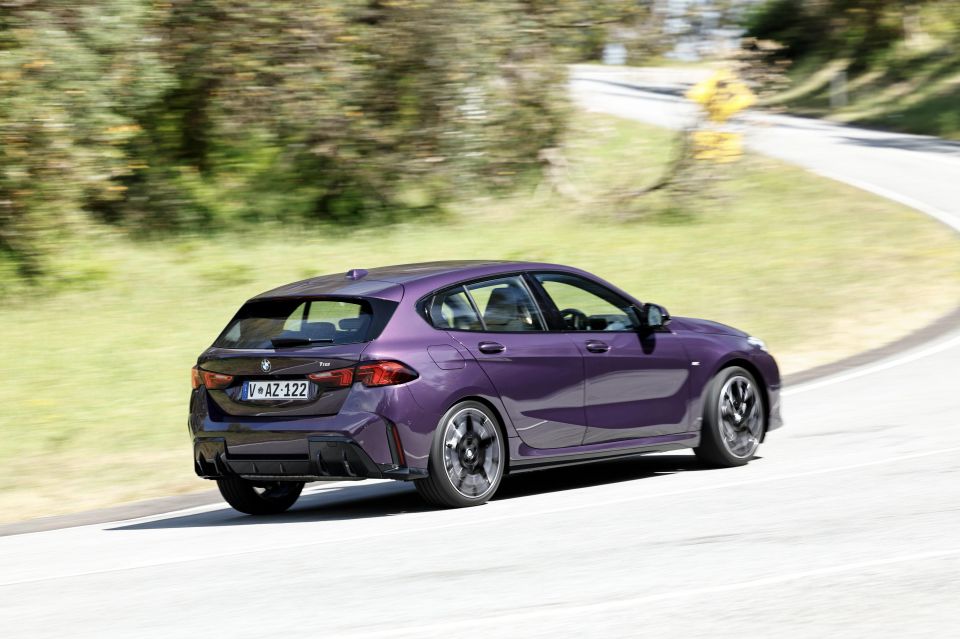
That means pulling out into traffic won’t be an issue, provided you manage your throttle input to minimise wheel slip while turning. Again, that quirk isn’t unique to this car.
If you’re taking it for a bash on your local mountain road, it’s more than capable of keeping its speed up, but you won’t be surprised to know momentum is your friend with this relatively low-output engine.
If you want to unlock some more performance there are drive modes to play with, although there’s only three of them as standard, simply named ‘Efficient’, ‘Sport’, and ‘Personal’. The latter has been deemed the default mode by BMW.
While Personal and Efficient aren’t particularly special as they prioritise smooth and less spirited driving respectively, Sport is where you’ll find the biggest change. Suspension stiffens up, steering becomes heavier, and the transmission will hold gears longer and deliver faster shift times.
Shifting the transmission into ‘sport’ mode via the gear selector only adjusts the transmission, but selecting Sport through the infotainment screen brings the full monty including sharper throttle response.
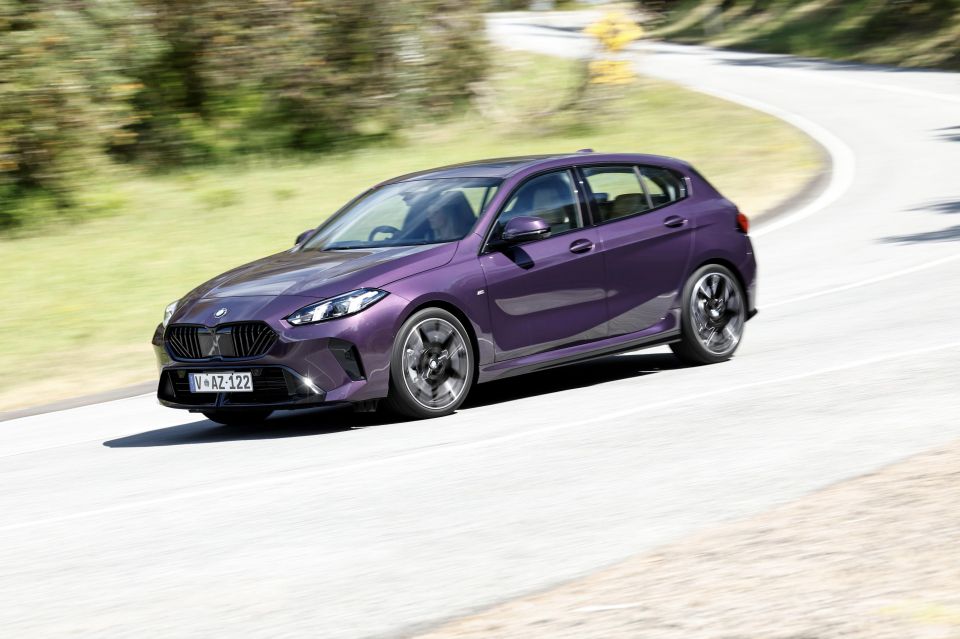
Making it even more enjoyable, using the paddle shifters will automatically switch the transmission to manual mode. Shifts are smooth and responsive, which is exactly what you want when you’ve only got 115kW to play with, but bear in mind the 118 is relatively lightweight at just 1390kg kerb.
When driving along in either of the other two modes, you may find you need a quick boost of power but don’t have time to manually select Sport on the screen.
Worry not, because holding the left paddle for a second will engage Boost mode, which gives you 10 seconds of maximum power – usually plenty to shoot past a slower moving vehicle.
Overall, it’s quite a comprehensive and compelling driver’s package. Everything important is catered for via well-sorted tech systems, but there are some shortcomings and they relate to the driver assist systems.
The most annoying feature is the 118’s speed limit warning, which will beep at you three times when you exceed the posted limit. That doesn’t sound so bad, but the problem comes when your speed changes.
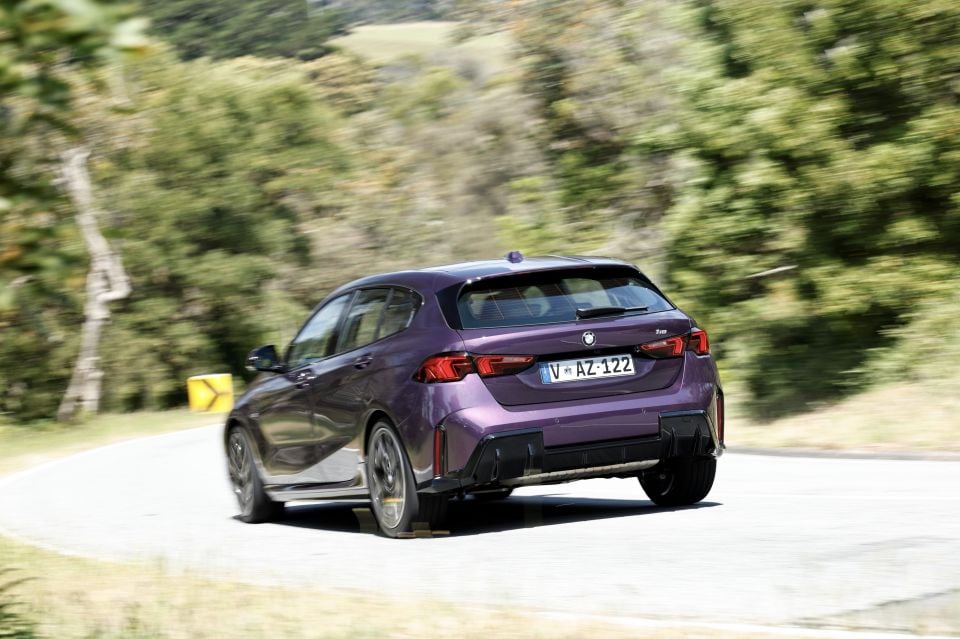
If the car is showing a speed of 81km/h in an 80km/h zone, for instance, it’ll beep but then quieten down. If you climb to 82km/h, it will beep three times again.
That means to keep up with traffic, when it’s difficult to maintain a steady speed, the car will almost always be beeping at you. Thankfully, you can turn the audible warning off through just a couple of menus in the infotainment system.
Other safety tech worked reliably and inoffensively during our test drives. The adaptive cruise control with lane centring worked confidently and reliably, working to match traffic around us while keeping the car centred nicely in its lane. Similarly, you can comfortably rely on the cameras and sensors when pulling into a tight space.
The passive lane-keep function intervenes only if you legitimately stray close to the line, and never in a way that is annoying or seemingly dangerous.
All up, the 118 is a genuinely fun car to drive, aided by top-notch handling dynamics.
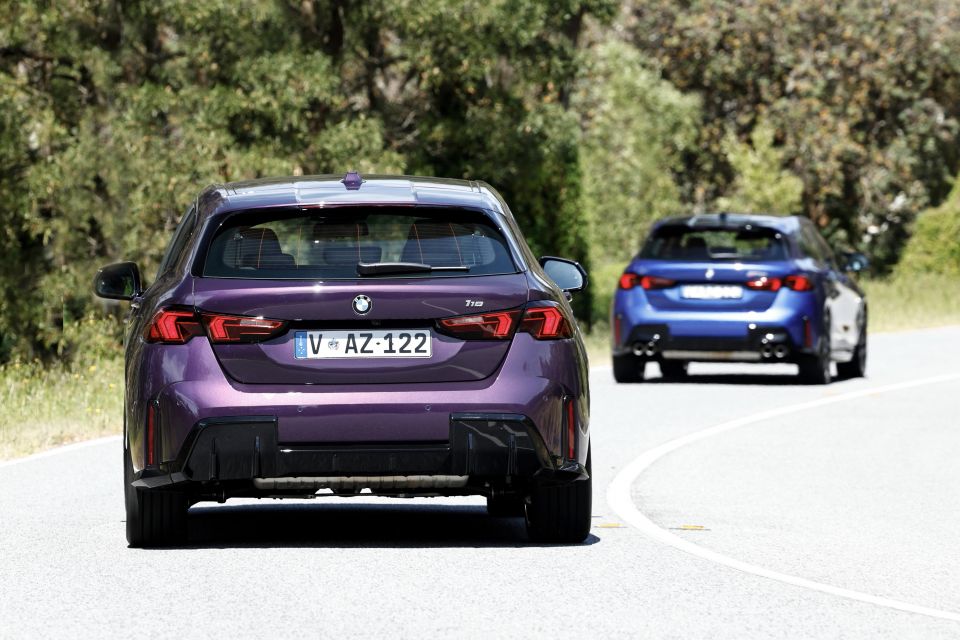
The engine may be significantly less powerful than the unit in the M135, but still offers plenty and it’s enough to get the most out of what the rest of the car is capable of.
Couple that with a low kerb weight and the inherent nimbleness of a small hatch, and this is a recipe for a perfectly sensible and refined daily driver that can also carve up twisty roads on the weekends.
And at this price point, the 118 certainly shouldn’t be a hard sell.
To see how the BMW 1 Series stacks up against its rivals, use our comparison tool
The 2025 BMW 1 Series range is available in two variants, and this 118 still gets a sizeable suite of standard gear.
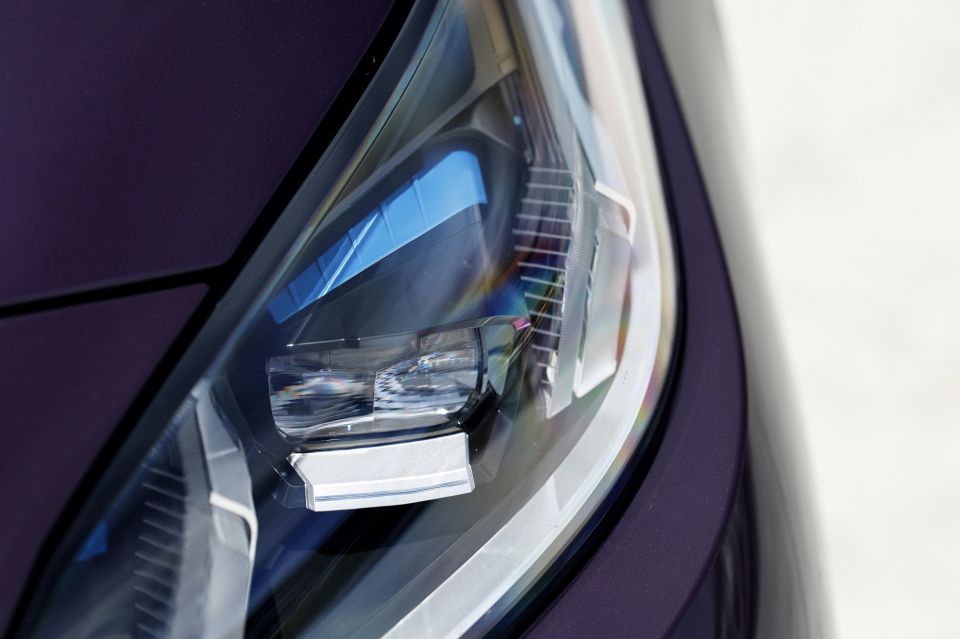

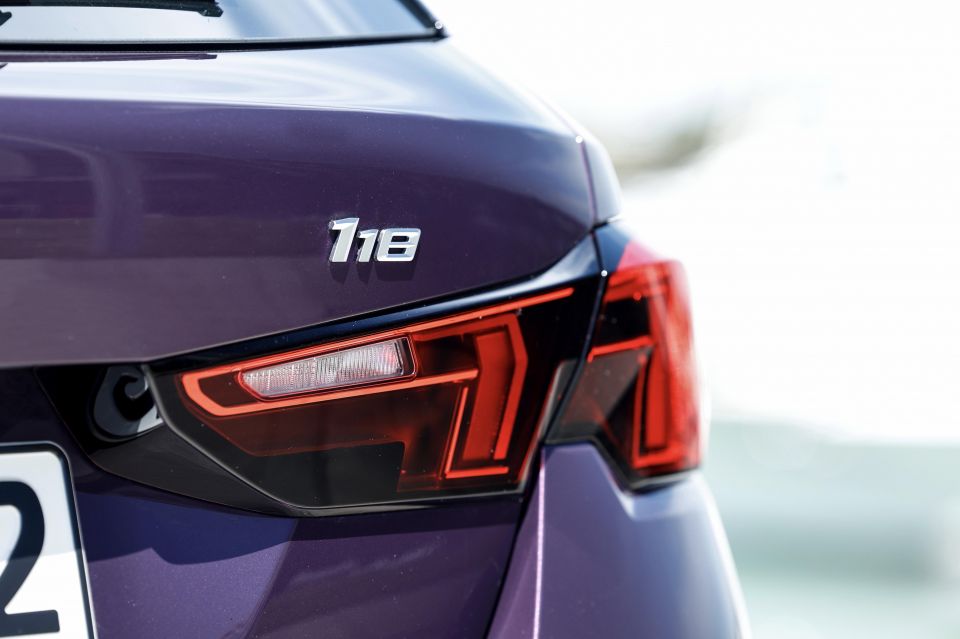

2025 BMW 118 highlights:
There are two option packages available on the 118.
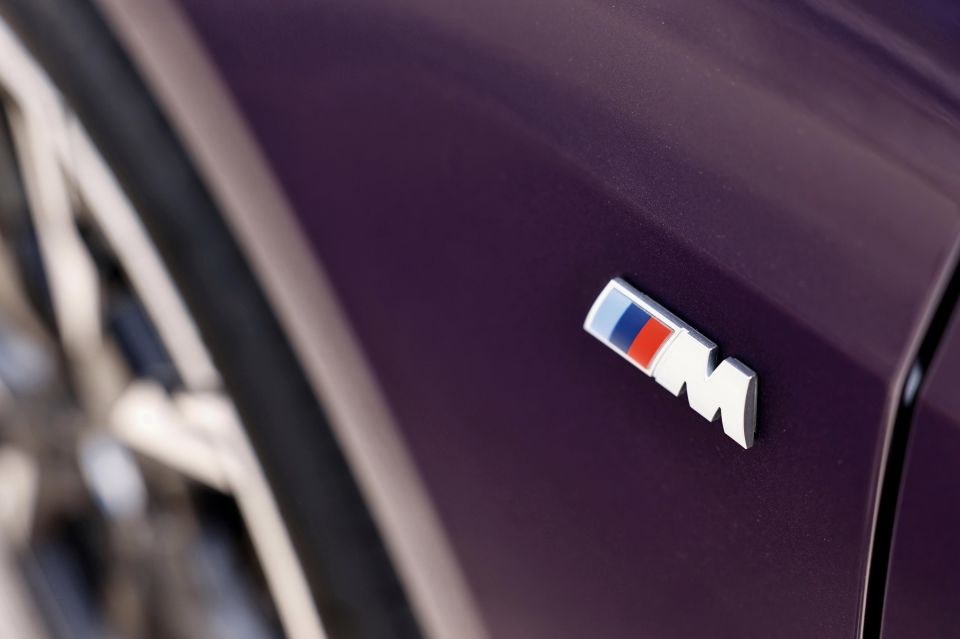
M Sport Package Pro ($2462) adds:
Enhancement Package ($5000) adds:
The 2025 BMW 1 Series has yet to be assessed by ANCAP or Euro NCAP.
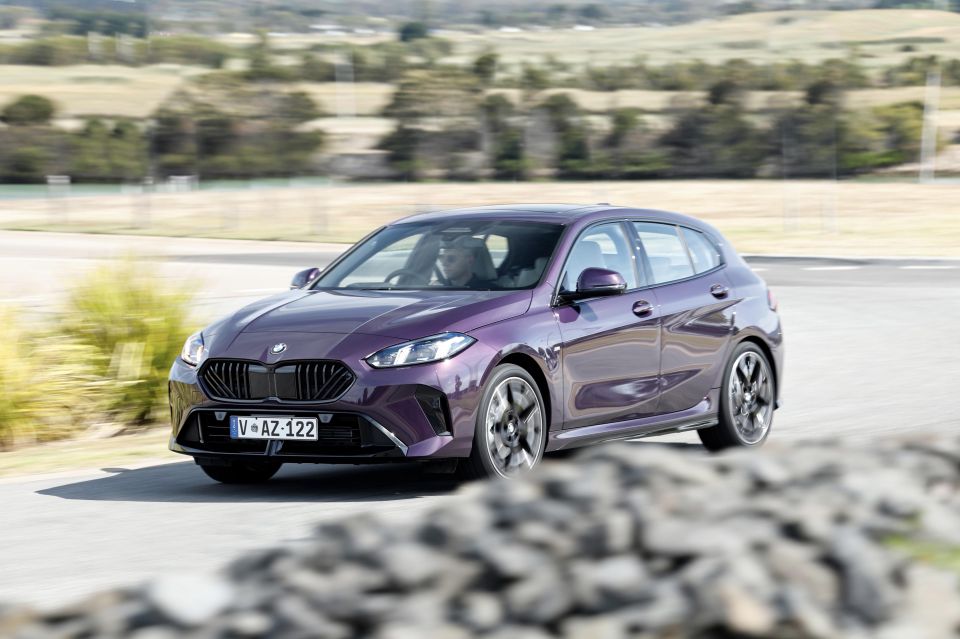
Standard safety equipment on the 118 includes:
The BMW 1 Series range is covered by the German brand’s five-year, unlimited-kilometre warranty.
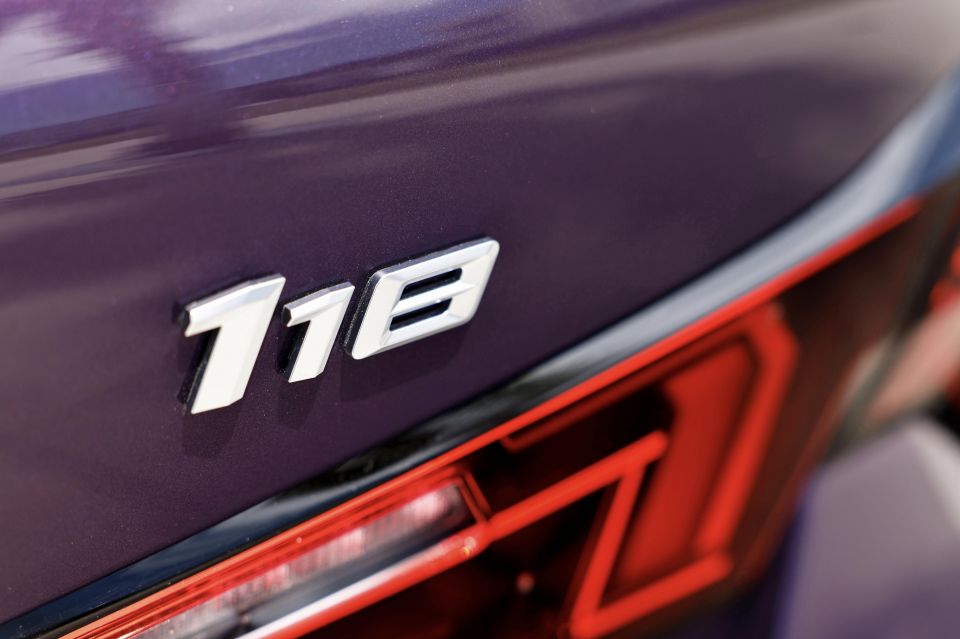
BMW offers a five-year, 80,000km Service Inclusive Basic package for the 1 Series, which costs $2210 – the same as the 2 Series.
| Running costs | BMW 1 Series |
|---|---|
| Warranty | 5 years, unlimited kilometres |
| Roadside assistance | 3 years |
| Service pack | 5 years, 80,000km – $2210 |
To see how the BMW 1 Series stacks up against its rivals, use our comparison tool
Buy your new car without the stress. It's fast, simple and completely free.

Great service from Travis and team, second time I have used this business would not hesitate to recommend them to anyone
Craig C.
Purchased a Ford Ranger in Sunshine Coast, QLD
CarExpert helped Craig save $7,224 on his Ford Ranger, now let us save you on your next new car.
Get your BEST priceIt may split opinions on looks alone, but the 118 really is a solid little car.
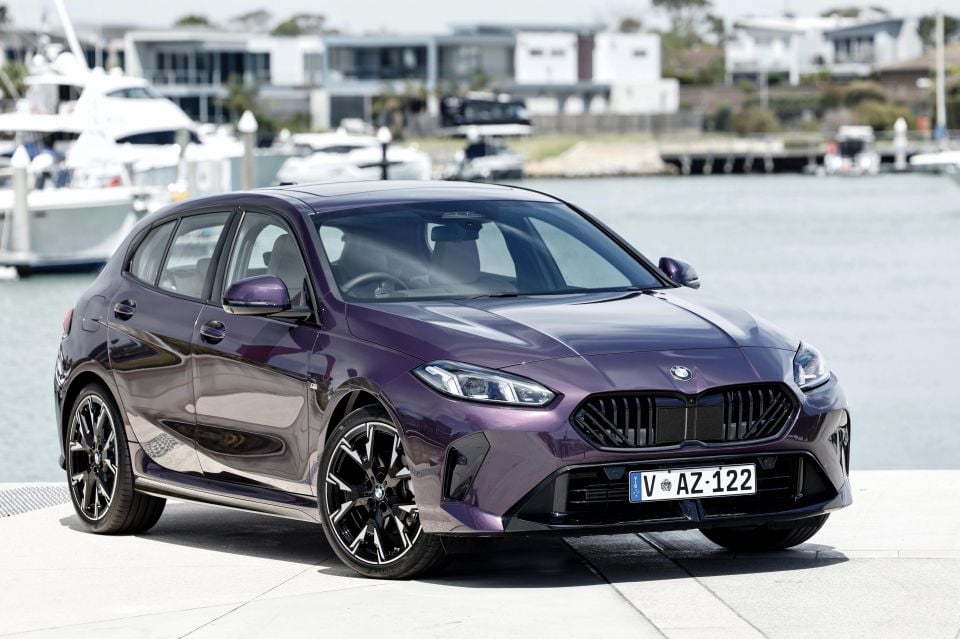
We find it hard to argue against the interior presentation, and the sheer amount of tech included as standard is a refreshing step forward from the old model. It all looks great and works reliably and intuitively.
The ergonomic seating position and ease of adjustment helps to get comfortable situated, and all the materials are pleasant to the touch on the inside.
We could maybe do without the gloss black surfaces and the minimalist approach to buttons, because relegating functions like climate control to the infotainment system makes things more difficult than they need to be.
But they are just minor niggles in the 118, which really shines when you get out on the road.
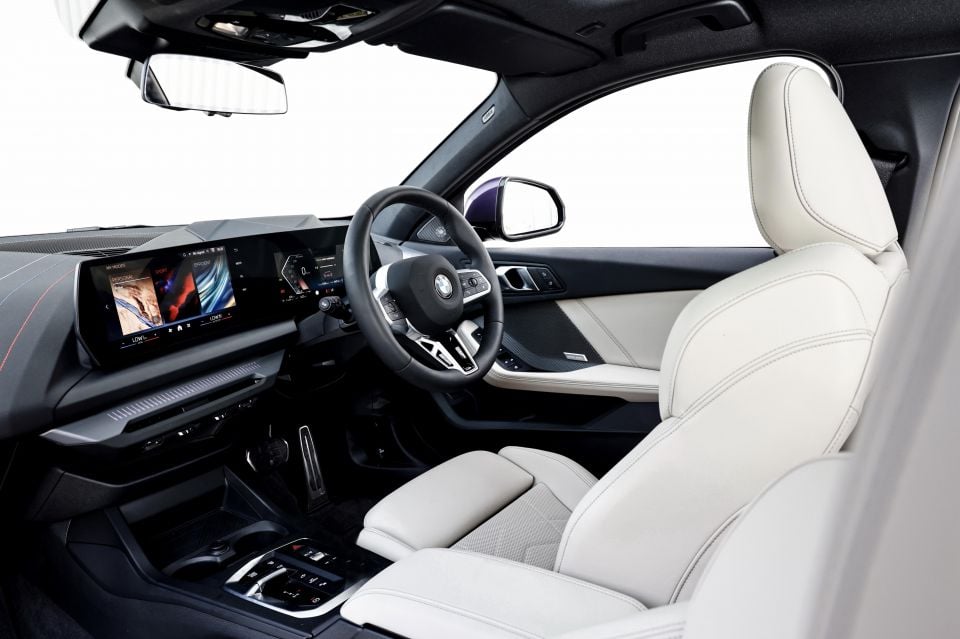
We love the three-cylinder under the bonnet. It may not make as raucous an exhaust note as its big brother, but it has plenty of poke and is more than capable of dealing with almost any situation you could throw at it.
True to BMW form, handling is also excellent, at least for a front-drive hatch. The ride may be stiff for some – despite the adaptive damping, which is the only mechanical M enhancement on this car – but we doubt too many people in the market for a BMW hatch wearing M badges would want softer suspension.
And there are enough drive modes, transmission settings and ways to customise the 118’s high-tech interior to suit almost any preference. All of that not only makes it great for the nine-to-five, but for spirited weekend cruises too.
If you can deal with the circa-$60,000 price and the occasional beep, you really won’t miss out on much by opting for this ‘garden-variety’ 1 Series instead of its beefier (and much pricier) sibling.
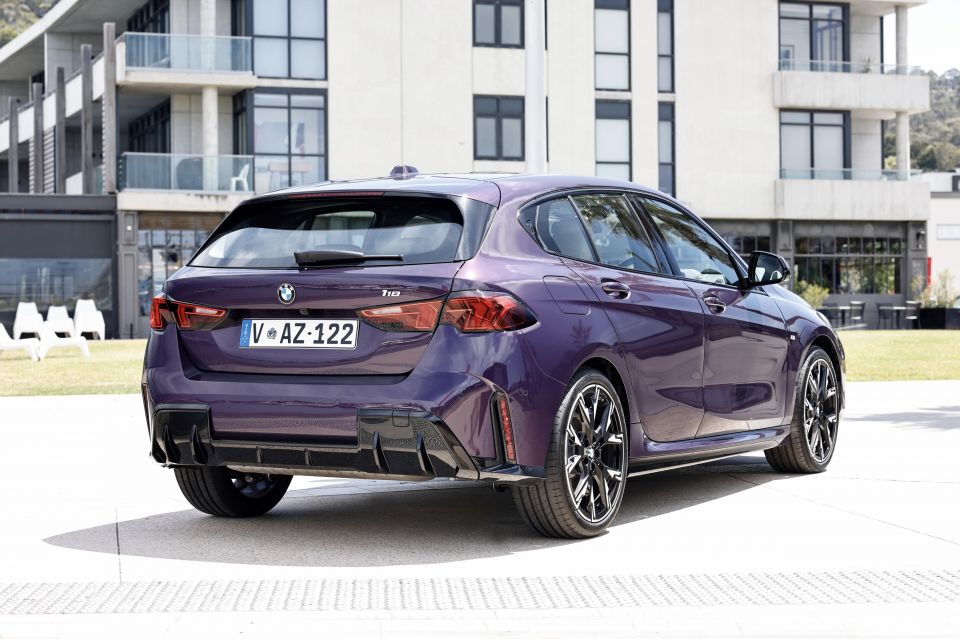
Interested in buying a BMW 1 Series? Get in touch with one of CarExpert’s trusted dealers here
Click the images for the full gallery
MORE: Everything BMW 1 Series
Where expert car reviews meet expert car buying – CarExpert gives you trusted advice, personalised service and real savings on your next new car.
Max Davies is an automotive journalist based in Melbourne, Australia. Max studied journalism at La Trobe University and stepped into the automotive world after graduating in late 2023. He grew up in regional Victoria, and with a passion for everything motorsport is a fan of Fernando Alonso.


Max Davies
2 Months Ago
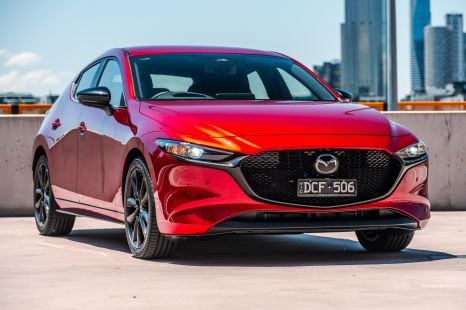

Josh Nevett
2 Months Ago


William Stopford
2 Months Ago
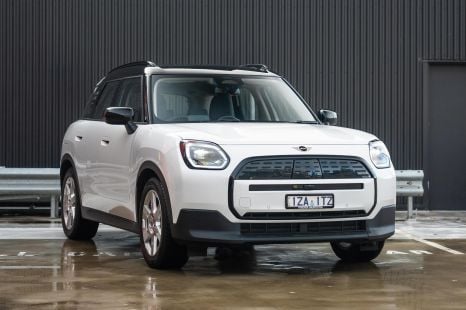

Josh Nevett
2 Months Ago
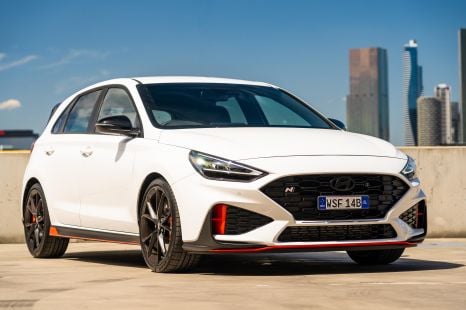

Josh Nevett
2 Months Ago
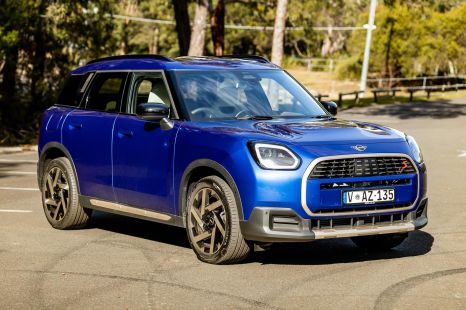

Matt Campbell
1 Month Ago